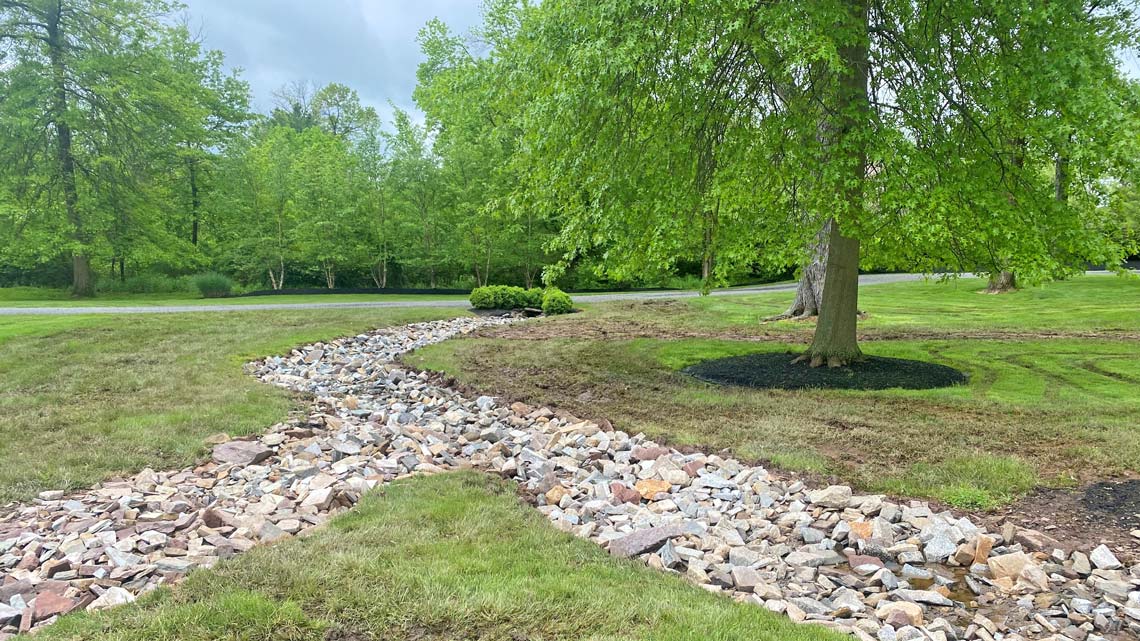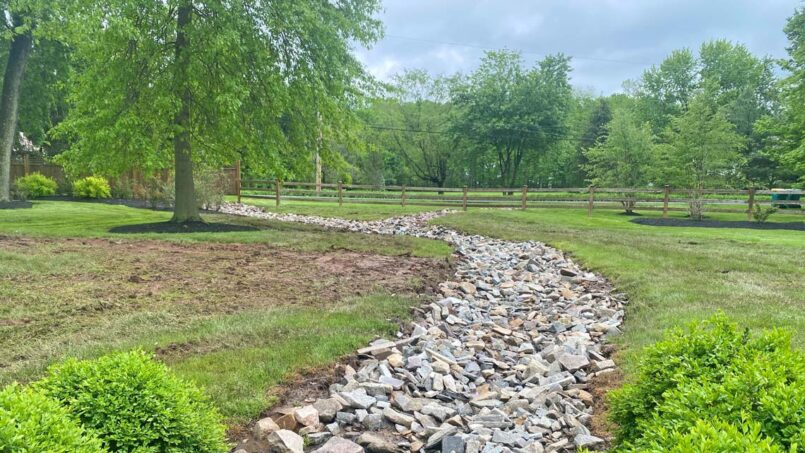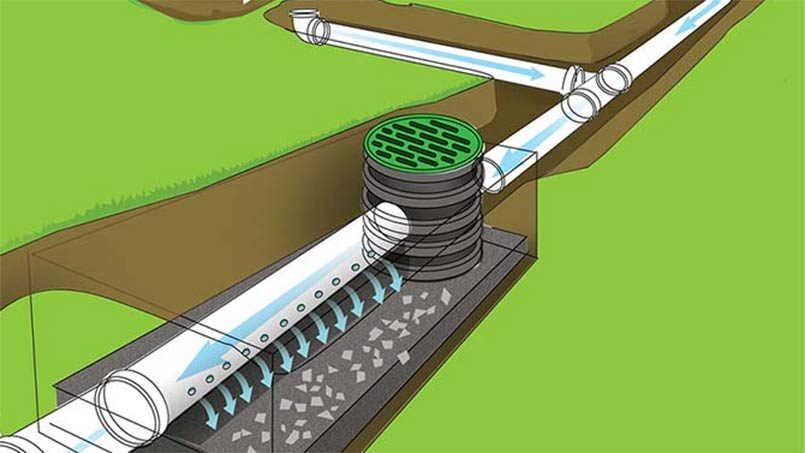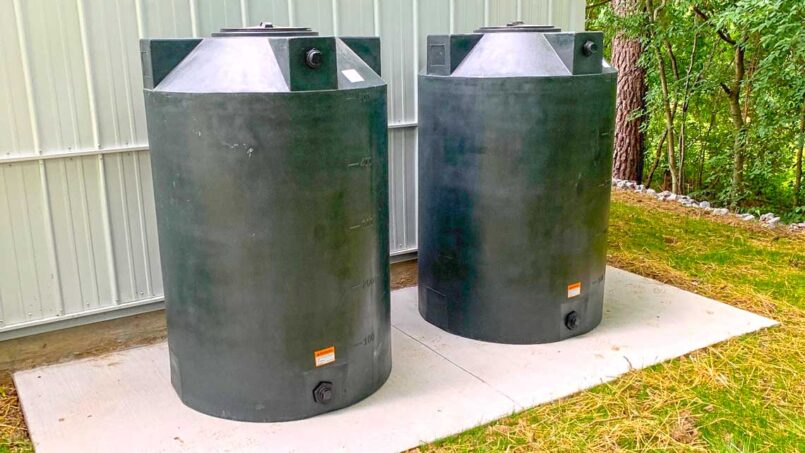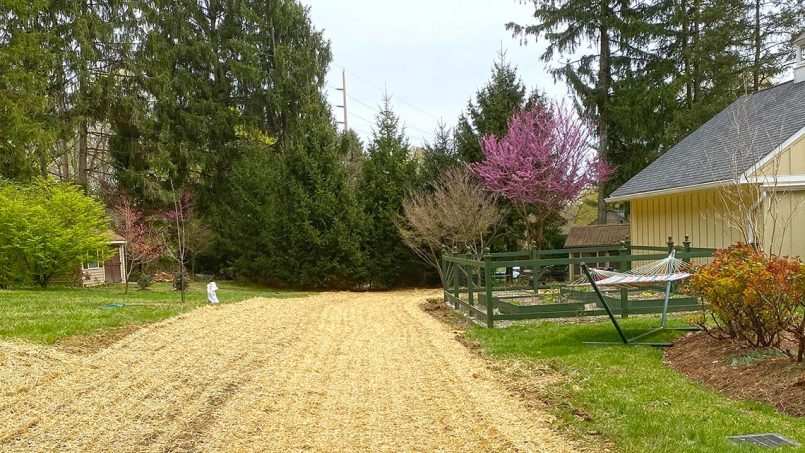(Storm Water Management)
Drainage Solutions
Proper grading is crucial to proper storm water management and erosion control. Drainage solutions are needed when you have;
- water problems or mold in your basement,
- a saturated yard,
- erosion,
- or standing water issues that lead to insect and mosquito problems.
Managing water and how it drains is absolutely necessary to protect your buildings and your property. A French drain is our most popular option for water management and is able to remediate problems from flash flooding.
Our Drainage Options
A project in Quakertown, PA uses a diversion system from the roof of a new shed into an adjacent pond. The perimeter banks of the pond help to contain the additional water and a new spill-way at the far end allows excess water to flow to an area of wetlands.

